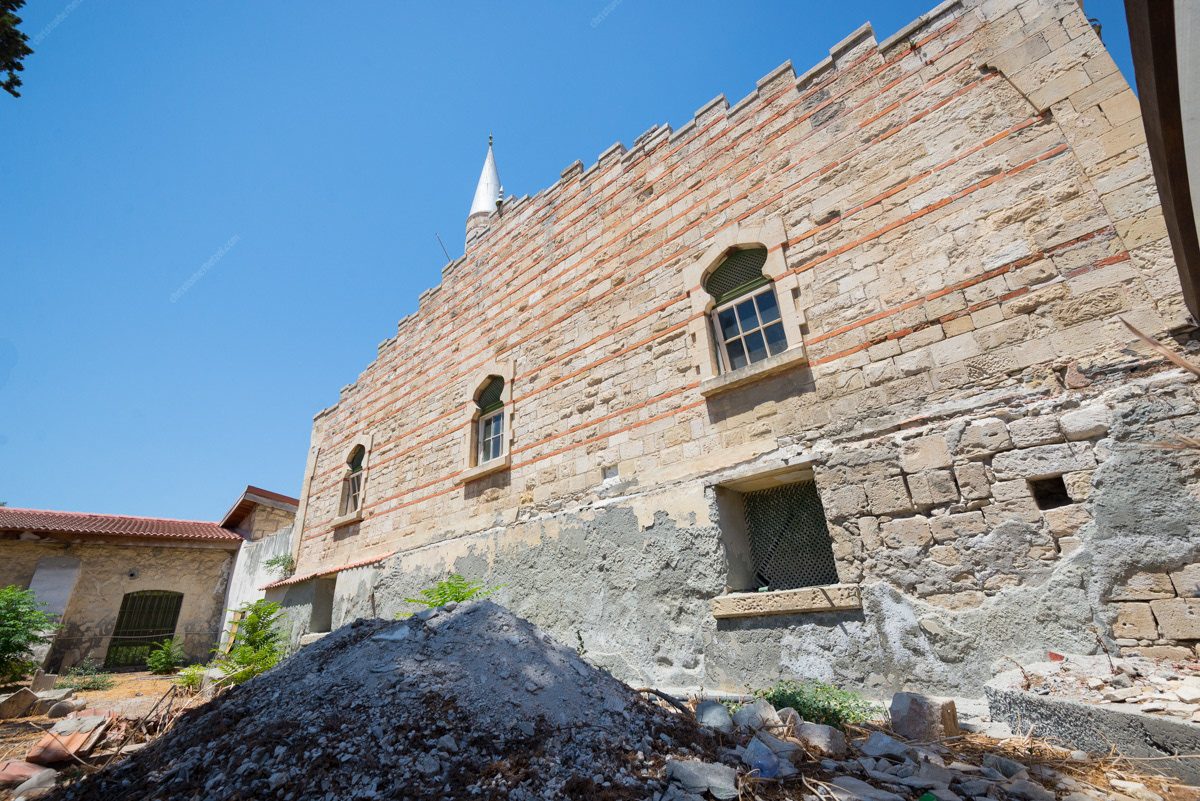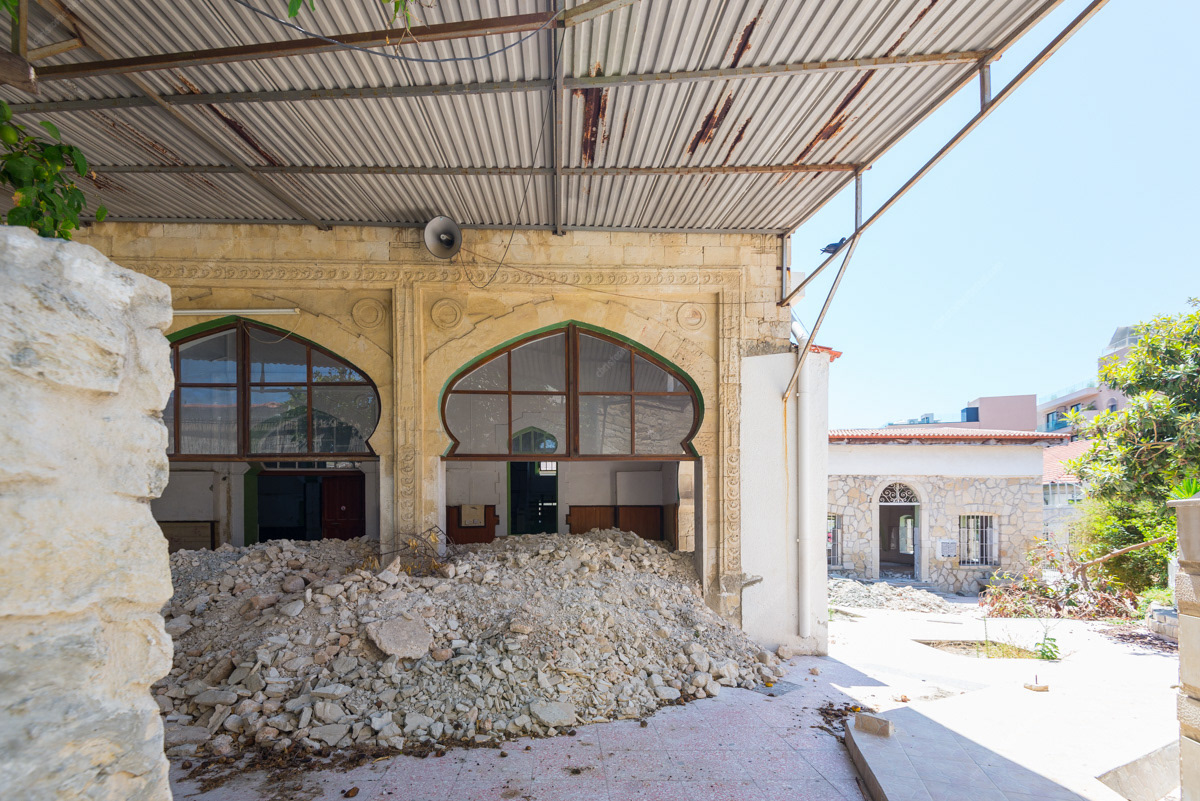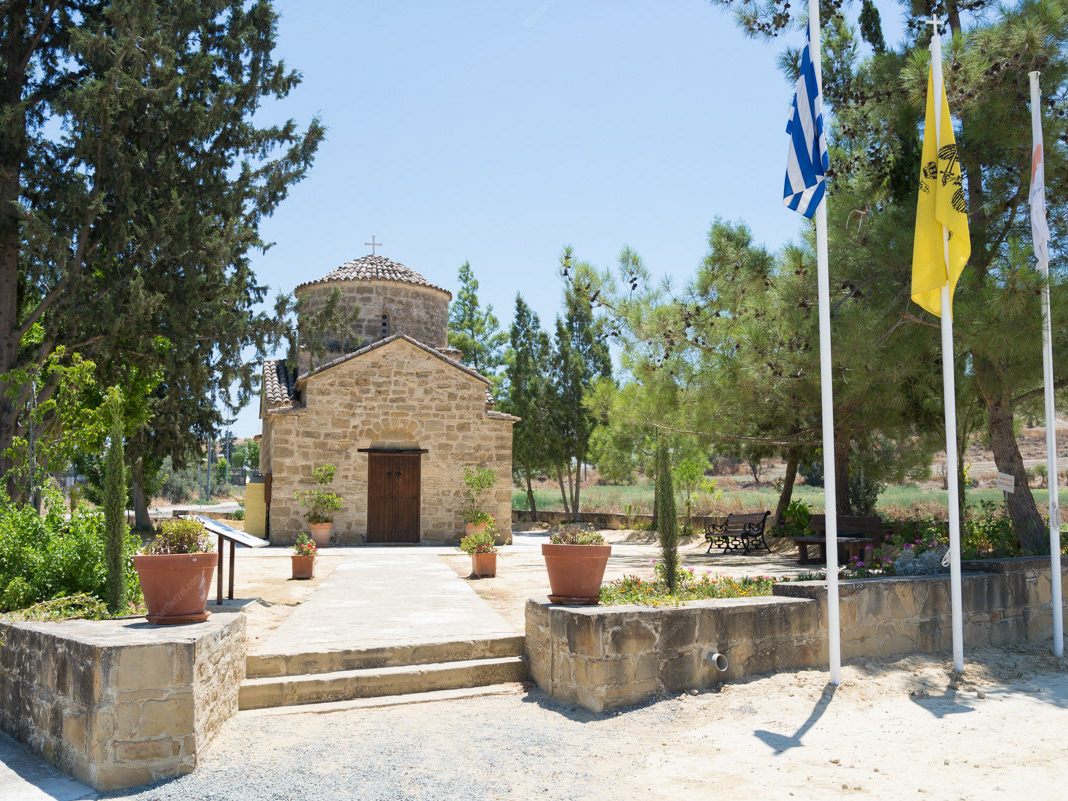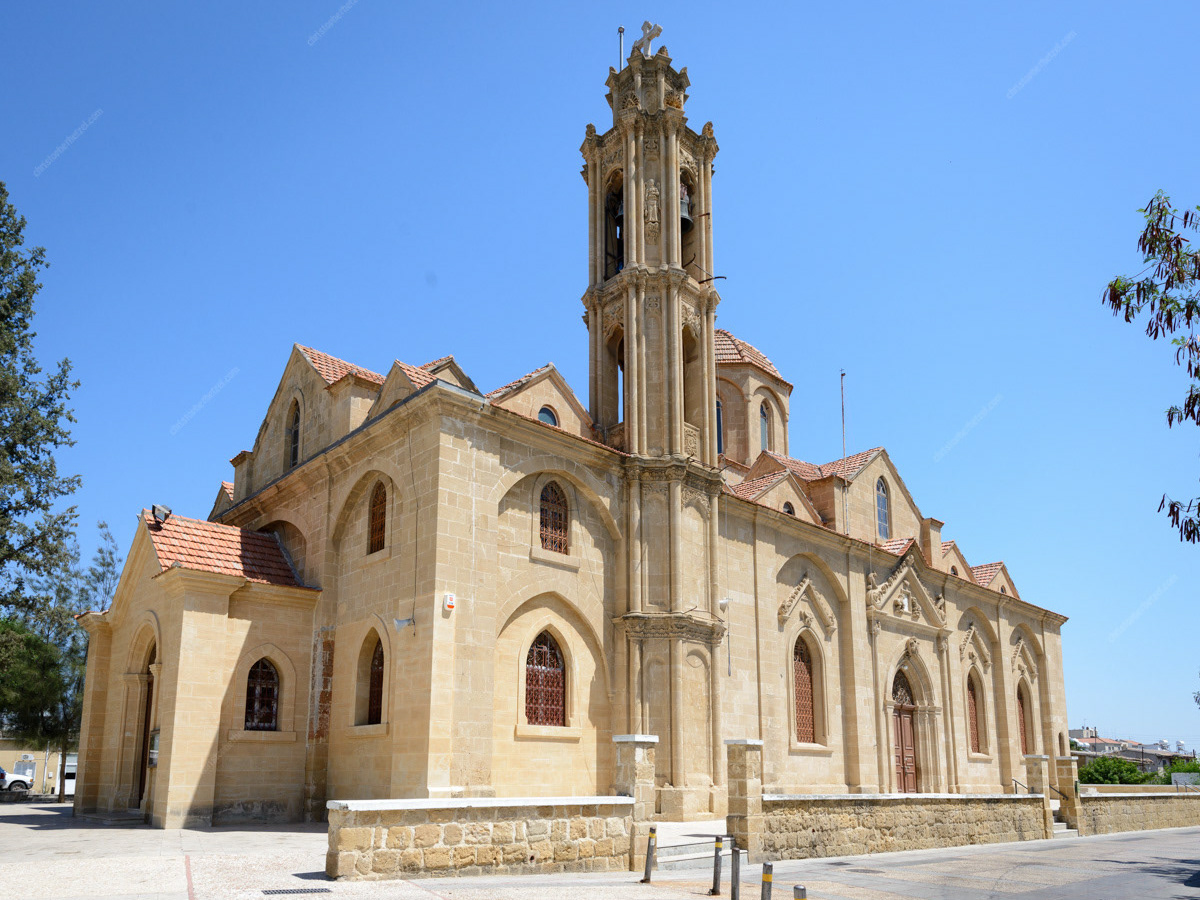The Great Mosque (Cami Kebir / Eski Cami) of Limassol, Cyprus, is located approximately 100 meters east/northeast of Limassol Castle, in the city's old Turkish quarter. First erected by the Ottomans in the 16th century AD, it was built over the ruins of two older churches - the earliest of these dating to late antiquity and the end of Cyprus' Roman period. Construction of the mosque likely began at the same time as reconstruction of the nearby Castle, following the Ottoman conquest of the island in AD 1570.
The Mosque that exists today was restored to its present configuration in 1906. Its interior is divided by columns into six sections, with arches connecting the columns to the walls, similar in design to a slightly younger mosque of the same name in Larnaca. Next to the mosque is an Ottoman graveyard, once sheltered by a palm garden. The graveyard contains a number of carved tombstones adorned with Ottoman and Persian script, including the graves of notable Ottomans leaders, Mehmet Efendi, an 'Admiral of the Fleet' who died in 1758, and one Suleyman Pasha, who died in 1715.
South elevation of the mosque. The Ottoman graveyard is in the foreground.
Limassol traditionally has had a mixed population of Greek and Turkish Cypriots. The Great Mosque has served the community for nearly five centuries. The Great Mosque is currently closed for renovation by the Republic of Cyprus.
In 1993, during construction of central Limassol's sewage network, archaeologists excavated 25 square meters of the street immediately adjacent to the mosque's east exterior wall. Although small, this excavated area revealed much about Limassols' development and the history of this particular location at the city's heart. The excavations exposed evidence of an early Christian three-aisled basilica, built sometime in the 5th-7th century AD, and the central and side apses of a double-apsed church from the 8th-10th century AD. The remains of both are a good two meters below the present street level. The two apses are the most visible archaeological elements.
The 5th century basilica was the first church in this location. It presumably had a timber roof, characteristic of such structures at the time, and the Corinthian columns standing outside the mosque today are believed to be from this structure.Built at the end of the Roman period, it was subsequently destroyed during the 7th century AD, by either earthquakes or foreign invasion, or perhaps both. The 5th century construction date was confirmed by the presence of a block bearing an inscription inserted into the upper courses of the apse. It contains the prayer of a certain Paul, son of Fasourios.
A stone sarcophagus was found in the smaller southern apse below the floor level of the late antique church. It is believed to have once contained a burial or a holy relic. Access to sarcophagus was maintained in later reconstructions, suggesting it was considered of some importance. Why it was important is no longer known. However, some speculate the remains could have been a sepulchre dedicated to a local saint, such as Saint Tychikos - a disciple of St. Paul (mentioned several times in the Bible) and believed to have been the city's first bishop - but there is no direct evidence to substantiate this connection.
A new, second church was built from the ruins of the first and consecrated as the city's Orthodox cathedral, as early as the 8th century AD. This structure is believed to have been a multi-domed, three-aisled basilica, dedicated to Saint Katherine (Agia Ekaterini). The burial of a bishop was found north of this structure's large apse. The burial's location and depth suggest the second church was abandoned by the 13th century AD.
This Byzantine church was restored as a Gothic cathedral by the Latin (Roman Catholic) bishops of Limassol sometime in the 13th-14th century AD, during the Lusignan era. During the mosque's restoration in 1906, crusader coffins and tombstones reportedly were found below the floor level, and medieval paintings on the lower wall courses. The 1993 excavations also uncovered a plaster floor from this period.
The Latin cathedral was destroyed by an earthquake in 1491, after which the church was again rebuilt. It was the main part of this structure that the Ottomans converted into a mosque, following their conquest of the island in 1570. Several sources further indicate the mosque was built (restored?) by one Mestan Agha in 1829-1830.

Interior of a 20th century addition.







